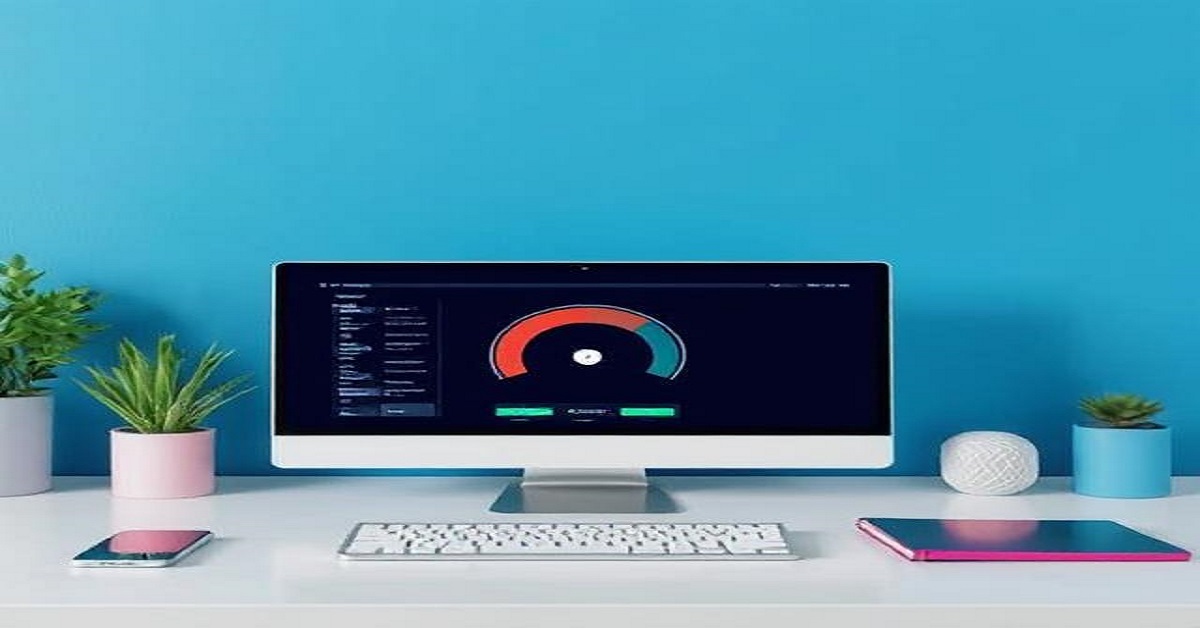When it comes to your online experience, few things are as frustrating as a slow or unreliable internet connection. Whether you’re streaming your favorite TV series, participating in a Zoom meeting, or battling it out in your preferred online game, your internet speed forms the foundation for everything you do online. We know you want a clear view of your connection’s performance — and we’re here to walk you through everything you need to know about conducting a thorough internet speed test.
What Is An Internet Speed Test?
An internet speed test is a powerful diagnostic tool that assesses your connection’s upload, download, latency, and jitter in real time. This lets you see whether your internet service provider (ISP) is delivering the speeds you’re actually paying for — or falling short — and helps you identify bottlenecks or weak points in your network.
Why An Internet Speed Test Is So Crucial
When we connect to the internet, we’re sending and retrieving vast amounts of data in real time. Without a strong, reliable connection, everything from streaming high-resolution video to making clear video calls can suffer. Our team understands that you need your internet to perform at its best — whether you’re a gamer, a remote worker, or a content creator — and a well-performed internet speed test is the first step toward optimizing your connection.
How We Perform An Internet Speed Test
We follow a clear and systematic process to enable you to gauge your true internet performance:
Step 1: Disconnect Unnecessary Devices
We advise you to disconnect or disable all additional devices from your network — smartphones, tablets, smart speakers — to avoid interference. This guarantees you’re measuring your raw internet speed without additional congestion.
Step 2: Close Background Applications
Close any applications or services that may consume significant bandwidth. This includes large downloads, software updates, or heavy data streams. Our objective is to maximize available bandwidth for your speed test.
Step 3: Choose The Nearest, Reliable Speed Test Server
Distance to the server can affect your results. We typically connect to the nearest high-speed server with low latency for the most accurate reflection of your internet’s performance.
Step 4: Measure The Connection
Using industry-leading speed testing tools, we gauge your download speed (the rate at which data is received), your upload speed (the rate at which data is sent), your latency (network delay measured in milliseconds), and your jitter (the variation in packet delivery).
Download Speed Explained in Detail
Your download speed directly impacts your ability to consume content — whether that’s high-resolution video, large files, or extensive online games. We typically advise a minimum of 25 Mbps for 4K video, while 100 Mbps or greater is desirable for heavy usage across multiple devices.
Upload Speed Explained in Detail
Your upload speed is crucial for sending data back to the internet — for video conferencing, uploading large files, or participating in interactive games. Ideally, your upload speed should be at least 5 Mbps or greater to enable smooth communication without bottlenecks.
Latency: The Ultimate Measure of Connection Quality
Latency — often called ping — measures the delay your signals experience while traveling across the network. Ideally, latency should be lower than 50ms — this guarantees a faster, more responsive connection for real-time applications, from video games to Zoom meetings.
Jitter: Why Consistent Connection Matters
Jitter refers to the variation in packet delivery over time. If jitter is high, your audio may break up during a call, or your video may stutter. We aim for jitter under 30ms for a smooth and stable experience.
What Is An Ideal Internet Speed?
Your ideal internet speed depends on your usage. Here are our general guidelines for your connection:
- General Browsing and Email: 5–10 Mbps
- Streaming in HD (1080p): 10–25 Mbps
- Streaming in 4K or Ultra HD: 25–100 Mbps
- Online Gaming: 50 Mbps or greater, with latency <50ms
- Work From Home (Video Calls, File Transfers): minimum 100 Mbps
Reasons Your Internet Is Slower Than Expected
If your internet isn’t up to standard, there are many potential bottlenecks. Some include:
- Distance From Your Router: The farther you move away, the weakier your signal.
- Router Limitations or Outdated Equipment: Older routers may struggle with high speeds.
- Too Many Devices: All competing for bandwidth can slow down your connection.
- ISP Throttling or Network Congestion: Often, heavy usage periods can diminish your speeds.
How We Help You Improve Your Connection
We’re passionate about helping you maximize your internet connection. Here are our most reliable strategies:
✅ Upgrade Your Plan with Your ISP
Consider choosing a faster package if your current speed falls short of your needs.
✅ Placement of Your Router
Position it in a central, clear spot in your home or office — free from interference — for maximum coverage.
✅ Limit Number of Devices
Consider disconnecting unnecessary devices or turning them off during heavy usage periods.
✅ Installing a Mesh Network
If you’re experiencing weak signals in certain rooms, adding additional mesh routers can enable strong coverage across your home.
✅ Reboot Your Router
Sometimes a simple restart can clear up congestion and improve your connection’s stability.
Final Words From Our Team
We’re here to empower you with the tools, knowledge, and expertise you need to make the most of your internet connection. An internet speed test is not just a number — it’s a reflection of your online experience. We encourage you to perform these tests regularly and make the necessary tweaks to enjoy faster, more reliable internet, whether for work, entertainment, or communication.







